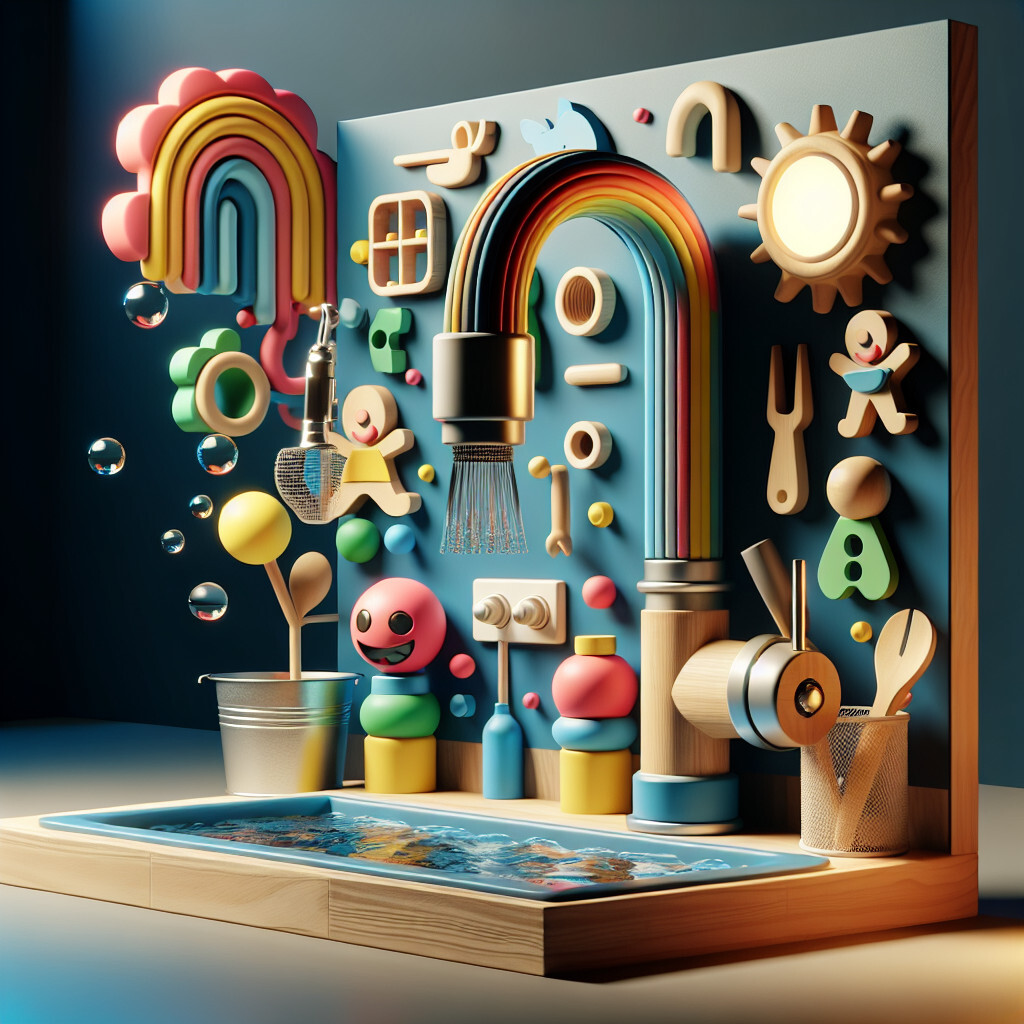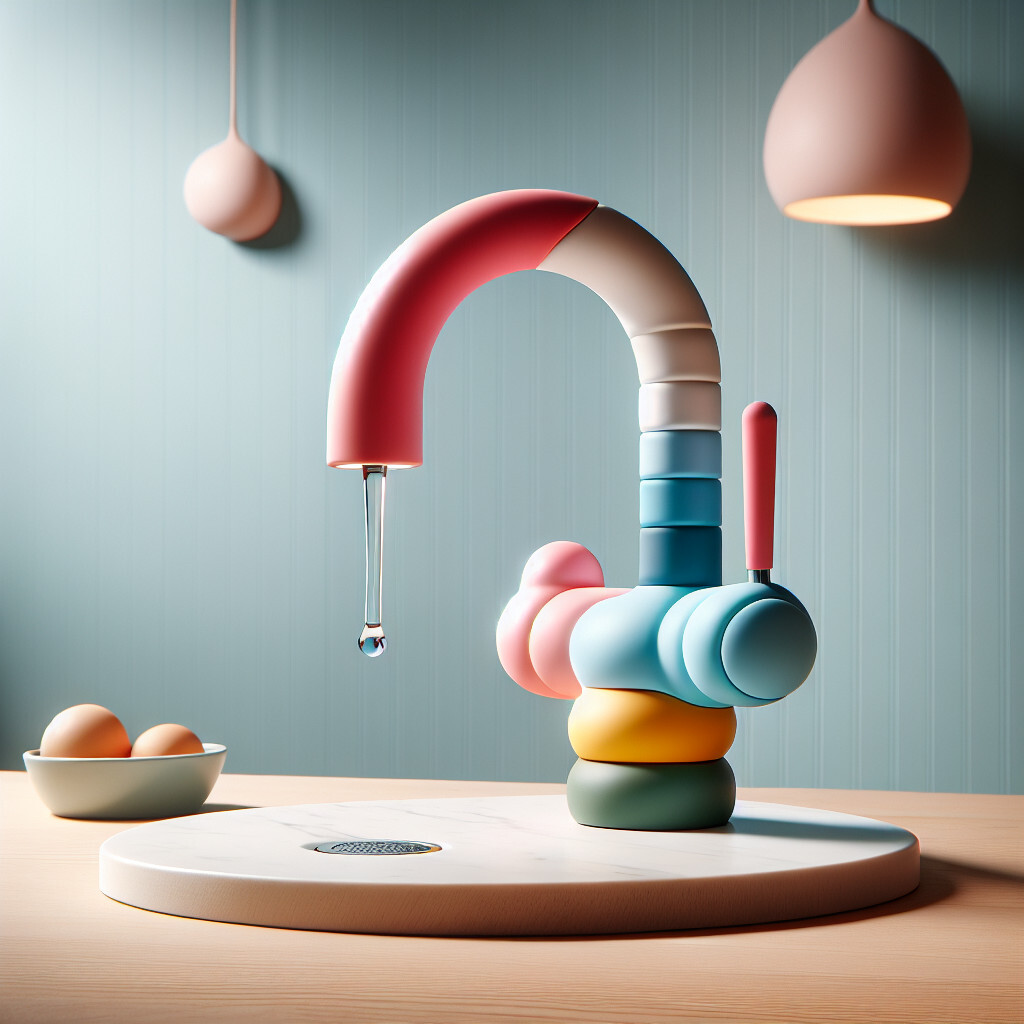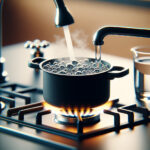-
Table of Contents
“Turning Fun into Flow: Kids Kitchen Water Tap!”
Introduction

A water tap for kids’ kitchen is a fun and educational tool designed specifically for children. It is usually part of a play kitchen set where kids can pretend to wash dishes, cook, and clean, just like adults do. This tap is often made from safe, durable materials to ensure it can withstand rough play. It’s a great way to teach children about the importance of water conservation and hygiene in a playful and engaging manner. Some models may even have real water flow to provide a more realistic experience.
Understanding the Importance of Water Tap Safety in Kids’ Kitchens
Water taps are an essential component of any kitchen, including those designed for children. Kids’ kitchens, whether they are play kitchens or real ones, provide an excellent platform for children to learn about various aspects of life, including cooking, cleaning, and most importantly, water safety. The importance of water tap safety in kids’ kitchens cannot be overstated, as it plays a crucial role in ensuring the well-being of our young ones.
Children are naturally curious and love to explore their surroundings. This curiosity often leads them to the kitchen, where they can interact with various elements, including the water tap. However, this interaction can sometimes lead to accidents if the child is not properly supervised or if the tap is not designed with safety features. Therefore, it is essential to understand the importance of water tap safety in kids’ kitchens and take necessary measures to ensure it.
One of the primary concerns regarding water tap safety in kids’ kitchens is the risk of scalding. Children may accidentally turn on the hot water and burn themselves. To prevent this, it is advisable to install thermostatic mixing valves that limit the water temperature to a safe level. Additionally, lever taps or taps with easy-to-turn handles can be installed to make it easier for children to operate them without the risk of sudden temperature changes.
Another significant concern is the risk of water wastage. Children may leave the tap running, leading to unnecessary water wastage. To address this issue, parents can consider installing self-closing taps that automatically shut off after a certain period. This not only conserves water but also teaches children the importance of water conservation.
Moreover, the physical design of the tap also plays a crucial role in ensuring safety. Taps with sharp edges or protruding parts can cause injuries. Therefore, it is advisable to choose taps with a smooth and rounded design for kids’ kitchens. Also, the height and reach of the tap should be appropriate for the child’s size to prevent accidents due to overreaching.
Furthermore, it is essential to educate children about the importance of water tap safety. Parents and caregivers should explain the potential risks associated with improper use of the tap and teach them how to use it correctly. This education should be reinforced regularly to ensure that the child understands and remembers the safety measures.
In conclusion, water tap safety in kids’ kitchens is a critical aspect that parents and caregivers should not overlook. By installing taps with safety features, choosing a safe design, and educating children about water tap safety, we can create a safe and enjoyable kitchen environment for our children. After all, the kitchen is not just a place for cooking and cleaning; it is also a space where children learn valuable life skills and develop a sense of responsibility. Therefore, ensuring water tap safety in kids’ kitchens is not just about preventing accidents; it is also about fostering a safe and conducive learning environment for our children.
Choosing the Right Water Tap for Your Child’s Play Kitchen
Choosing the right water tap for your child’s play kitchen is an essential task that requires careful consideration. A play kitchen is a significant investment in your child’s development, fostering creativity, imagination, and practical life skills. The water tap, a key component of the play kitchen, should be chosen with the same level of thoughtfulness and attention to detail.
Firstly, safety should be your primary concern when selecting a water tap for your child’s play kitchen. The tap should be made from non-toxic, BPA-free materials to ensure it does not pose any health risks to your child. Additionally, the tap should have smooth edges and corners to prevent any accidental injuries during play. It is also advisable to choose a tap that is easy to operate for little hands, with a design that minimizes the risk of pinching fingers.
Secondly, the functionality of the water tap is another crucial factor to consider. While some parents may prefer a simple, non-working tap for the sake of simplicity, others may opt for a more realistic, working tap that can hold and dispense water. A working tap can add an extra layer of realism to your child’s play, enhancing their imaginative play experience. However, it’s important to remember that a working tap may require additional maintenance and supervision to prevent water spills and potential water damage.
Thirdly, the size and fit of the water tap should be compatible with your child’s play kitchen. The tap should be proportionate to the size of the kitchen and should fit securely to prevent it from becoming a choking hazard. It’s also worth considering the height of the tap. A tap that is too high or too low may be difficult for your child to reach and use comfortably.
Furthermore, the aesthetic appeal of the water tap should not be overlooked. Children are naturally drawn to bright, attractive colors and designs. Choosing a tap that is visually appealing can stimulate your child’s interest and encourage them to engage more with their play kitchen. However, it’s also important to choose a design that is age-appropriate and not overly complex.
Lastly, the durability of the water tap is a key consideration. Children’s play can often be rough and vigorous, so it’s important to choose a tap that can withstand this level of use. Look for a tap that is made from sturdy, durable materials and has a robust construction. This will ensure that the tap can endure the test of time and provide your child with many years of imaginative play.
In conclusion, choosing the right water tap for your child’s play kitchen involves a careful balance of safety, functionality, size, aesthetics, and durability. By considering these factors, you can ensure that you select a tap that not only enhances your child’s play experience but also contributes to their overall development and well-being. Remember, the best tap is one that meets your child’s needs and sparks their imagination, turning their play kitchen into a hub of creativity and fun.
Fun and Educational Activities Using the Kids Kitchen Water Tap
The kitchen is often considered the heart of the home, a place where families gather to cook, eat, and share their day. For children, the kitchen can also be a playground of discovery and learning. One of the most overlooked yet essential elements in this learning environment is the water tap. A water tap for kids’ kitchen not only adds a fun element but also provides a plethora of educational opportunities.
The water tap in a kids’ kitchen can be a great tool to introduce children to the concept of water conservation. By teaching them to turn off the tap when not in use, children can learn the importance of saving water from an early age. This simple act can instill in them a sense of responsibility towards the environment, a lesson that will serve them well in the future.
Moreover, the water tap can be used to demonstrate basic scientific principles. For instance, children can observe the change in water flow when the tap is turned on at different levels, thereby understanding the concept of pressure. They can also learn about temperature by feeling the difference between hot and cold water. These hands-on experiences can make learning more engaging and enjoyable for children.
In addition, the water tap can be a practical tool for teaching children about hygiene. By encouraging them to wash their hands before and after meals, children can develop good hygiene habits. This can be particularly beneficial during the current pandemic situation, where hand hygiene has become more critical than ever.
Furthermore, the water tap can be used to enhance children’s mathematical skills. Parents can introduce concepts such as volume and measurement by asking children to fill different containers with water. This can also help improve their problem-solving skills as they figure out which container can hold more water or how many times they need to fill a container to reach a certain level.
The water tap can also be a source of creative play. Children can pretend to wash dishes, cook, or even run a restaurant, thereby stimulating their imagination and creativity. This can also help improve their social skills as they interact with their peers or family members during their pretend play.
Lastly, the water tap can be a tool for sensory exploration. The feel of water, the sound of the tap, and even the sight of water flowing can stimulate children’s senses. This can be particularly beneficial for younger children who are in the stage of sensory development.
In conclusion, a water tap for kids’ kitchen is not just a plaything, but a versatile tool that can provide numerous learning opportunities. It can help children understand important concepts, develop essential skills, and even foster a sense of responsibility towards the environment. So, the next time your child plays with the water tap, remember, they are not just playing, but learning valuable lessons that will help them in their growth and development.
How to Teach Your Kids to Conserve Water Using Their Play Kitchen Tap
Teaching children about water conservation is a crucial aspect of their environmental education. One effective way to impart this knowledge is by using their play kitchen tap. This method not only makes learning fun but also allows children to understand the concept of water conservation in a practical and relatable way.
The first step in this educational journey is to explain the importance of water conservation to your children. It is essential to communicate that water is a finite resource, and wasting it can lead to severe environmental consequences. You can use simple language and examples that they can easily understand. For instance, you can tell them that just like their toys, water is not unlimited, and if they waste it, there might not be enough left for other important uses like drinking, bathing, and cooking.
Once they understand the importance of water conservation, you can then introduce the play kitchen tap as a tool for learning. The play kitchen tap is a perfect representation of the real kitchen tap, and children can easily relate to it. You can start by showing them how to properly turn the tap on and off. Emphasize the importance of turning off the tap completely after use to prevent water from dripping, which can lead to wastage over time.
Next, you can demonstrate the concept of water conservation by using the play kitchen tap. For example, you can show them how to fill a cup with water without letting it overflow, which would waste water. You can also teach them to use only the amount of water they need for their play cooking, instead of leaving the tap running. This hands-on approach will help them understand the practical application of water conservation.
In addition to teaching them how to use the play kitchen tap responsibly, you can also incorporate other water-saving practices into their playtime. For instance, you can encourage them to reuse water in their play kitchen. If they have used water for washing their play dishes, they can use the same water for watering their play plants. This practice will help them understand the concept of reusing water, which is another important aspect of water conservation.
Moreover, you can use this opportunity to teach them about the broader implications of water conservation. You can explain how saving water can help protect the environment and wildlife, and ensure that there is enough water for everyone. You can also discuss how water conservation can save money on utility bills, which can be an important lesson for their future financial responsibility.
In conclusion, the play kitchen tap can be an effective tool for teaching children about water conservation. It provides a hands-on, practical approach to learning that can make the concept of water conservation more understandable and relatable for children. By incorporating water-saving practices into their playtime, you can help them develop a sense of responsibility towards the environment from a young age. This early education can lay the foundation for their lifelong commitment to environmental conservation.
Q&A
Question 1: What is a water tap for kids kitchen?
Answer: A water tap for kids kitchen is a play accessory that mimics a real water tap. It is often part of a play kitchen set where kids can pretend to wash dishes or cook.
Question 2: Is a water tap for kids kitchen safe for children to use?
Answer: Yes, a water tap for kids kitchen is safe for children to use. It is typically made from non-toxic materials and designed with safety features to prevent any harm.
Question 3: Does the water tap for kids kitchen actually produce water?
Answer: No, the water tap for kids kitchen does not produce real water. It is a pretend play toy designed to mimic the function of a real tap.
Question 4: Where can I buy a water tap for kids kitchen?
Answer: A water tap for kids kitchen can be purchased at toy stores, department stores, or online marketplaces like Amazon or eBay.
Conclusion
In conclusion, a water tap for kids’ kitchen is a beneficial tool that promotes learning and independence. It is designed to be safe and easy to use for children, encouraging them to learn about water usage and hygiene. It can also foster a sense of responsibility and develop fine motor skills. However, adult supervision is still necessary to ensure safety.






